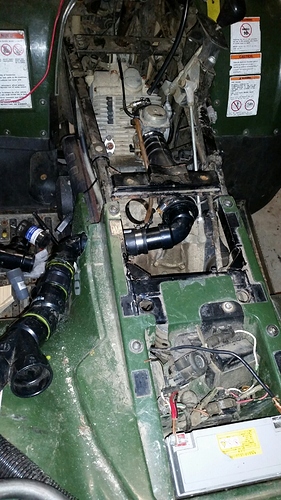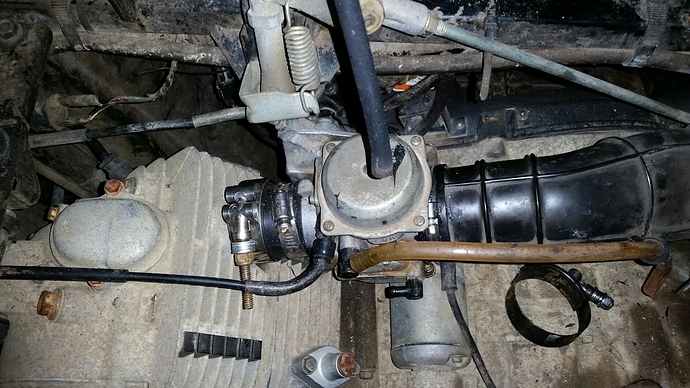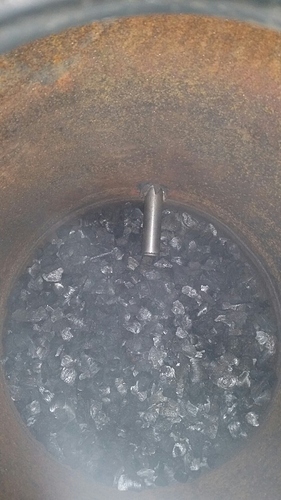Hi bill, not sure of all the properties but it is a concrete based product that you pour and it sets. I think fireclay is just a high alumina content clay. High temp refractive is used in blast furnaces and kilns. My only concern is if it expands and contracts differently then the underlying stainless nipple. Still a ways away from firing the unit yet.
Best regards. David Baillie
Hi Dave
May be put it in the wife’s oven for an hour at max temp to let it set and cure before going in to the pits of hell in the furnace of a gasifier !
Just a thought !
One thought David…
When making something that could be hot in the center and cool on the outside, it is best to make the part in “pie wedges” to allow the difference in expansion between the interior and exterior. I do this on the ceramic Victorias and it has worked very well even with rapid starts. In your case I would hold the wedges together with stainless hose clamps around the outside.
Hopefully you won’t have a problem.
Stephen
Hi Patrick, I like to think it’s “our” oven but I won’t test that assumption. After a 72 hr cure I will put it in the BBQ for an hour to drive off any water. Stephen I think if it comes to that I will go the disposable nozzle route.
Thanks for the feedback, David Baillie
Finished the tank and lid , welded it to a mount and bolted it to the back rack. The white PVC is the final filter housing. Oh so slowly coming together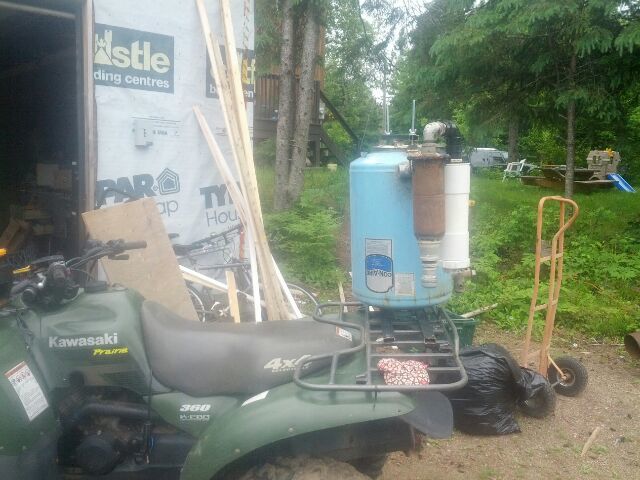
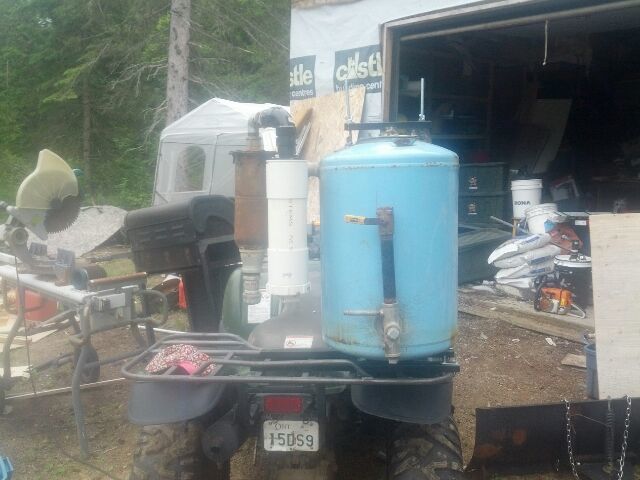
Time for the dreaded plumbing. Removed the air housing and was pleasantly surprised a 2" abs fitting fit the existing rubber fitting on the air intake.
First pic the original air intake box looking crowded in there.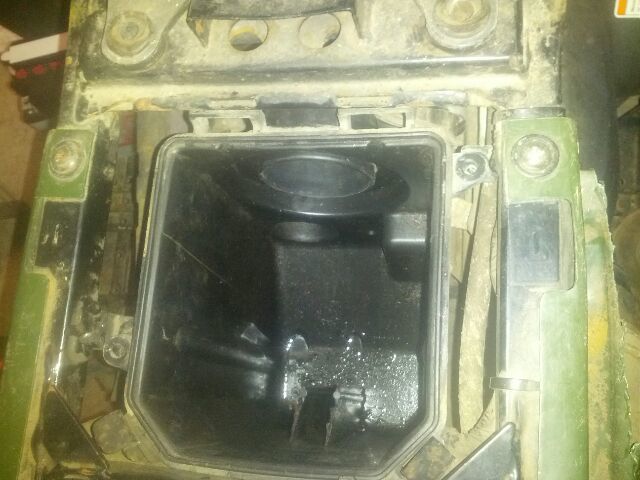
Second pic 2" abs elbow reduced to 11/4 to clear the exhaust pipe, drilled through the side plastic. Hopefully clear sailing now…
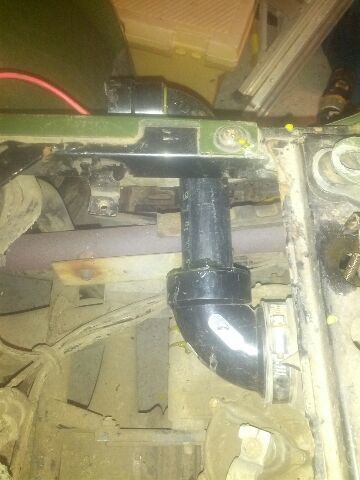
Finished the dreaded plumbing today. All set to fill and test fire.
Pic one back view Left to right Final filter, Starter blower, Main tank Attached to main tank air inlet is the exhaust recycling hose. Hose off final filter is looped to the starter blower.
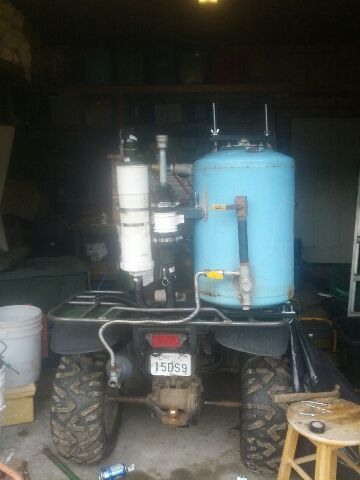
Pic two drivers side left to right Cyclone, final filter
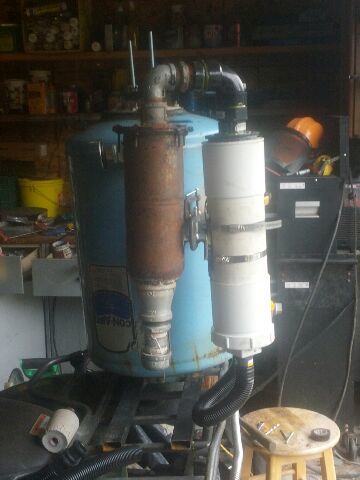
Pic 3 from front looking back. Left to right Main tank, temperature guage, cyclone. At bottom right you can see the air fuel intake/mixer.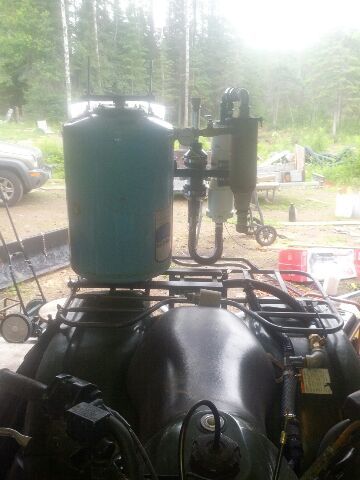
Flaring soon…
FIlled it up, fired it up and off it went… Never that easy of course. I could not get enough air into the mix at first. I had to drill some secondary air holes. I’ll replumb it for more air. Ran great though…
Video:
Very happy, enjoy!
Sure sounds like your on the right track. Amazing how this stuff just works and homemade too boot. 
well all projects have hiccups. For me it was breaking a bone in my arm at the wrist. Annoying. Project hiccup was a leaky fuel shut off valve causing that too rich run on the first video. Here is a better longer one showing a more accurate run. Lots of fun too, enjoy…
Very nice!
You stated it has a lot less power than you had hoped. What if you went with a 3/4" or 1" nozzle? Do you think that might help? Also, what year is it? Is it a 2 or 4 cycle? I have a 2003 Polaris Sportsman 400 which is a 4 cycle that I am hoping to run on charcoal someday.
Hi bill, it is a 2003 Kawasaki prairie 4 stroke. I think it had exactly the power I expected; rough guess a third less. I would be better off cooling the gas for more density or enriching with a drip if I need more power. I haven’t found any power increases with bigger nozzles on the other builds. Also same as the tractor I’m usually doing something where full throttle would get me killed :smile
Best regards, David Baillie
My poor atv has sat ignored all winter. I finally figured out a long standing problem though… the rubber vibration mount from the carb to the engine was split along the bottom. A 12 dollar part totally non related to the gasifier end was messing me up. Took off the gas tank to access everything and decided to redo the plumbing. Abs pipe with rubber transitions for flex.
Well she’s all back together and I added a new twist. The new nozzle is a piece of titanium I ordered off eBay and threaded. It’s supposed to have a 200 degree Celsius higher melt point then stainless… time will tell. Anyone try this yet? Hopefully run this weekend.
Remember our problem is not with meting, but with catastrophic oxidation. Keep your reaction temp below 1200C and the oxidation rate for titanium is fairly slow. I look forward to seeing your updates.
Is the quality of gas any better, worse or indifferent the higher temperature of the charcoal being burned at the nozzle? I’m just wondering if we can keep a SS nozzle from melting by mixing exhaust at the inlet, would that be a good indicator of the best gas? Or do we get that temp as hot as we can?
1000C is a good temp (well below the melting temperature), but that won’t prevent the oxygen from reacting with the metal and eating it away.
Bruce understands the science better then me. If I’m not wrong the reaction becomes less efficient as the temperature is lower so it’s finding that sweet spot of efficient reaction and nozzle longevity. Someone chime in to clarify any errors there.
David. Curious to know how you’re titanium nozzle works out since I am grappling with that issue right now.
You and me both. I’m away til Monday so it will have to wait now…


